Will Pruning a Tree in Summer Kill It?
- February 12, 2024
- 0 comment
Discover if summer pruning harms trees. Learn the best practices to ensure healthy growth without causing damage. Perfect your gardening skills. When it comes to the health and maintenance of your trees, the timing of pruning can be a critical factor. Contrary to popular belief, pruning a tree in the summer won’t necessarily kill it, but it does require a careful approach to avoid causing undue stress or damage.

In this guide, we delve into the nuances of summer pruning, exploring its potential benefits and pitfalls. By understanding the right techniques and timing, you can ensure your trees remain healthy, vibrant, and well-structured throughout the year. Read on to learn how to prune effectively during the summer months, backed by expert advice and best practices.
Table of Contents
- The Science of Tree Pruning
- Common Myths vs. Facts About Summer Pruning
- Risks of Summer Pruning
- Guidelines for Safe Summer Pruning
- Benefits of Summer Pruning
- Alternatives and Precautions
- Conclusion
- FAQs
The Science of Tree Pruning
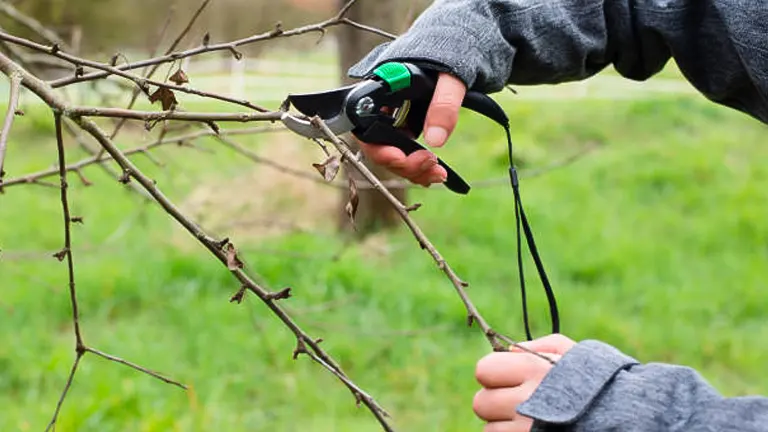
Tree pruning involves the selective removal of certain parts of a tree, such as branches, buds, or roots. Key reasons for pruning include deadwood removal, shaping (by controlling or directing growth), improving or maintaining health, reducing risk from falling branches, and increasing the yield or quality of flowers and fruits. The timing of pruning, crucial for its success, traditionally aligns with the tree’s dormancy period, typically in late winter or early spring. However, summer pruning serves specific purposes and, when done correctly, can be beneficial.
Biological Processes and Phenology

Trees have a remarkable ability to heal from wounds. When a branch is removed, the tree responds by forming a callus tissue around the wound. This natural defense mechanism is crucial for preventing the entry of pests and diseases. The effectiveness and speed of this healing process are influenced by the tree’s growth cycle, making the timing of pruning more than a matter of convenience. Phenology, the study of periodic plant life cycle events, suggests that trees are more vulnerable during certain phases of their growth cycle, particularly when actively growing in the warmer months.
Effects of Pruning Timing on Tree Health and Wound Healing
| Tree Species | Optimal Pruning Time | Wound Closure Rate | Potential Risks | Benefits of Optimal Timing | Additional Notes |
|---|---|---|---|---|---|
| Maple | Late Winter | High | Sap loss if pruned in early spring | Minimizes sap loss; enhances healing | Avoid pruning when sap is flowing to prevent “bleeding.” |
| Oak | Winter | High | Increased risk of oak wilt from spring to mid-summer | Reduces oak wilt infection risk | Prune outside of beetle activity period to avoid disease transmission. |
| Peach | Early Summer | Moderate | Risk of sunscald and pest invasion | Improves fruit size and quality; allows better light penetration | Prune after the last frost to avoid cold damage to new cuts. |
| Birch | Late Winter | High | Excessive sap flow if pruned in spring | Reduces sap flow from wounds | Like maples, birches have heavy sap flow in spring which can be problematic. |
| Apple | Late Winter to Early Spring | Moderate to High | Risk of fire blight infection in warm, wet springs | Stimulates healthy growth; can improve fruit yield | Pruning just before spring growth starts helps avoid stress during growth phases. |
| Cherry | Early Autumn | Moderate | Increased susceptibility to pests and diseases if pruned in spring/summer | Reduces disease risk; supports next year’s growth | Autumn pruning should be minimal to prevent stimulating new growth that won’t harden off before winter. |
| Pine | Late Winter to Early Spring | Moderate | Pruning in active growth can lead to resin flow | Prevents excessive resin flow; reduces pruning shock | Pines are less susceptible to diseases from pruning wounds compared to deciduous trees. |
| Elm | Early Spring | High | Risk of Dutch elm disease transmission in summer | Reduces disease transmission risk | Elms require careful timing to avoid disease, with early spring being safest before vectors are active. |
Looking at the table, it’s clear that pruning times really depend on the tree type. While late winter or early spring works for most, some trees like peaches and cherries need a different approach. This shows that knowing when to prune is about understanding each tree’s needs, emphasizing that there’s no one-size-fits-all solution. The main takeaway is the importance of timing in pruning to help trees heal better and stay healthy.
Common Myths vs. Facts About Summer Pruning
1. Myth: Pruning a tree in summer always leads to its death.
Fact: Trees can tolerate and even benefit from summer pruning under the right conditions. The key lies in understanding the tree’s growth cycle, the purpose of pruning, and the method employed.
2. Myth: Summer pruning is universally harmful to all tree species.
Fact: The impact of summer pruning varies among different species, with some trees being more resilient and even requiring summer pruning for optimal health and productivity.
3. Myth: Pruning in summer causes trees to overheat and become stressed.
Fact: Proper summer pruning can actually improve air circulation within the canopy and reduce heat stress by allowing air to flow more freely around the leaves and branches. This can help maintain a cooler microclimate around the tree.
4. Myth: Trees pruned in summer won’t heal properly.
Fact: Trees are actively growing during the summer, which means their healing processes are also active. With correct pruning techniques, cuts made during the summer can heal efficiently, preventing disease and decay.
5. Myth: Summer pruning will drastically reduce a tree’s fruit production.
Fact: When done correctly, summer pruning can enhance fruit quality and size, especially in certain fruit trees like apples and pears. It removes excess foliage, which allows more sunlight to reach the fruit, aiding in ripening and improving sugar content.
6. Myth: All pruning should be done in the winter when trees are dormant.
Fact: While winter pruning is beneficial for many reasons, summer pruning has its place, especially for shaping trees, controlling their size, and removing diseased or damaged wood. It’s about choosing the right time for the right reasons.
7. Myth: Summer pruning always stimulates new growth, which can be harmful.
Fact: Summer pruning can stimulate new growth, but this can be managed and used to the gardener’s advantage. For example, light summer pruning can help manage the shape of the tree without encouraging the vigorous growth that might occur with heavy pruning.
8. Myth: Removing green foliage during summer deprives the tree of needed energy, weakening it.
Fact: Although removing foliage does reduce a tree’s ability to photosynthesize, strategic pruning removes only a small fraction of the total leaf area. This selective removal often benefits the tree by removing diseased or inefficient leaves, thereby directing energy to healthier parts of the tree.
Risks of Summer Pruning
Summer pruning is not without its risks, which are primarily related to the tree’s vulnerability during its active growth phase.
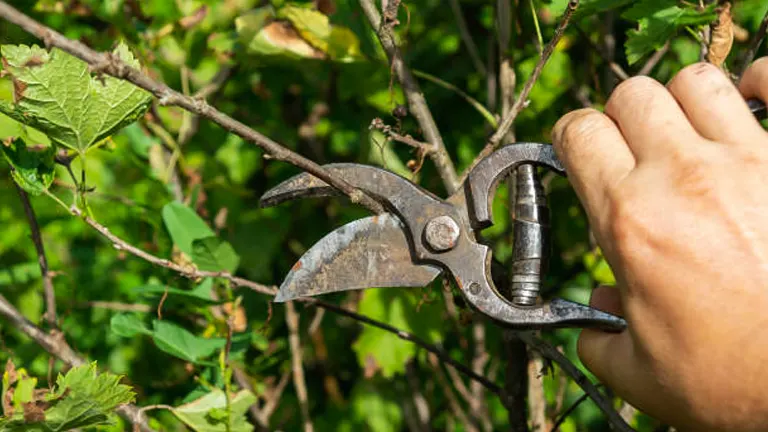
Pests and Diseases: The risk of pests and diseases infiltrating pruning wounds is notably higher in summer due to the combination of open wounds and favorable conditions for pathogens. For instance, certain beetles that spread diseases like Dutch elm disease are more active in summer and can be attracted to fresh wounds. Similarly, the spores of fungi responsible for diseases such as apple scab or fire blight are more prevalent and viable in warm, humid conditions, increasing the likelihood of infection.
- Preventive Insight: Application of appropriate wound dressings or pruning during less humid days can mitigate this risk. Moreover, selecting the correct time of day for pruning activities—preferably late afternoon or early evening—can allow wounds to dry slightly before the more humid nighttime hours, reducing the attractiveness of these wounds to pests and pathogens.
Sunscald: The sudden exposure of bark to intense sunlight after the removal of shading branches can cause sunscald, a condition characterized by cracking, peeling, or sunken areas on the trunk and branches. This damage not only affects the tree’s aesthetic appeal but can also weaken its structural integrity and open pathways for pests and diseases.
- Protective Measures: Employing careful pruning techniques to avoid overexposure and considering the use of tree wraps or whitewash on newly exposed areas can protect trees from sunscald. These materials reflect sunlight, helping to keep the bark temperature within safer limits.
Disruption of Growth: Summer pruning can inadvertently alter a tree’s energy allocation, diverting resources from growth and fruit production to wound healing. This disruption can affect the overall yield and quality of fruit in orchard trees or the bloom intensity in flowering trees.
- Balanced Approach: Limiting the extent of pruning to only what is necessary—such as removing dead, diseased, or weak branches—can help minimize the impact on the tree’s growth and productivity. The goal should be to maintain the tree’s natural form and vigor without imposing undue stress.
Water Stress: Not previously mentioned but equally important is the risk of increased water stress following summer pruning. The removal of a significant portion of the tree’s leaf canopy reduces its ability to photosynthesize and generate the sugars needed for growth and health, potentially weakening the tree during the hottest part of the year.
- Strategic Pruning: Ensuring that summer pruning is done judiciously, removing no more than 10-15% of the leaf area, can help maintain the balance between the tree’s ability to photosynthesize and its water needs, especially in drought-prone areas.
These risks underscore the importance of a measured approach to summer pruning, informed by an understanding of the specific needs and resilience of each tree species.
Guidelines for Safe Summer Pruning
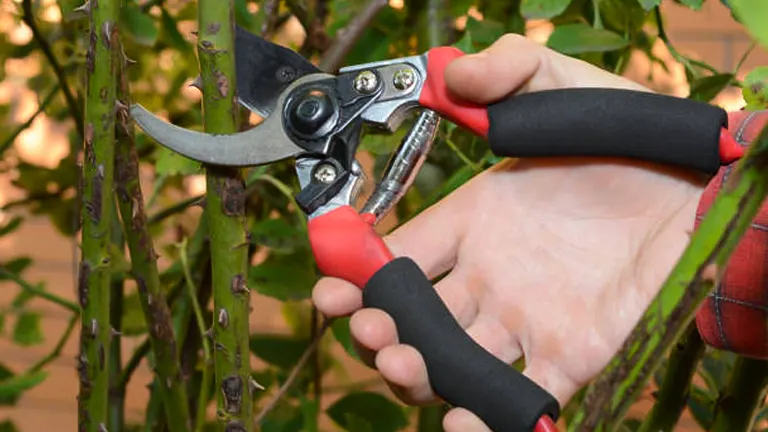
Pruning a tree during the summer, when done with care and understanding, does not have to be detrimental. Here are some guidelines to ensure that summer pruning promotes the health and aesthetics of trees rather than harming them.
- Understanding Tree Physiology: Recognizing the physiological state of the tree before pruning is crucial. Conduct a thorough health assessment to determine the tree’s hydration levels, signs of stress, and overall vitality. Trees under drought stress or showing signs of disease may require special consideration or delayed pruning to avoid exacerbating their condition.
- Timing Is Key: While late summer is ideal for many species, understanding the specific growth patterns of the tree in question can refine this timing further. For example, pruning should be avoided during peak sap flow periods for species susceptible to bleeding, such as maples and birches, even in summer.
- Selective Pruning Enhanced: Beyond removing only the problematic branches, consider the tree’s overall structure and future growth. Aim to preserve or establish a dominant leader and well-spaced lateral branches, ensuring the tree maintains a strong, natural form as it heals.
- Proper Technique Deep Dive: Utilize the three-cut method for removing larger branches: a notch cut on the underside of the branch, a relief cut further out to prevent bark stripping, and a final cut just outside the branch collar. This technique reduces the chance of damaging the tree and promotes better wound closure.
- Hygiene Practices Upgraded: In addition to cleaning tools, consider the timing of pruning specific species based on disease risk. For trees susceptible to certain pathogens active in summer, like fire blight in apples and pears, sterilize pruning tools with a 10% bleach solution or 70% alcohol between cuts, not just between trees.
- Water Management Post-Pruning: Provide supplemental water to pruned trees, especially those in urban or landscaped settings, to help mitigate any increased water stress caused by the reduction in leaf area. A well-hydrated tree is more resilient and can allocate more energy to healing.
- Mulching and Soil Care: Apply a layer of organic mulch around the base of the tree following pruning to help retain soil moisture, regulate soil temperature, and reduce weed competition. Keep the mulch a few inches away from the trunk to prevent moisture buildup against the bark.
- Monitoring and Aftercare: Post-pruning, monitor the tree for signs of stress or disease and the healing progress of cuts. Proper aftercare can significantly impact the tree’s recovery and growth following summer pruning.
Following these guidelines can mitigate the risks associated with summer pruning, ensuring that the practice supports rather than compromises tree health.
Benefits of Summer Pruning
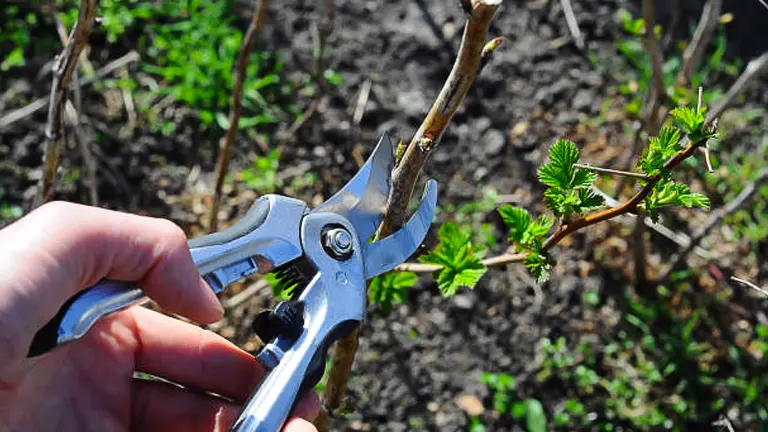
Despite the risks, summer pruning is not only about hazard reduction. It can also bring about several benefits, provided it is executed with precision and care.
- Enhanced Disease Management: During summer, the increased visibility of diseased branches is coupled with the tree’s active growth phase, which can facilitate more effective wound healing post-pruning. Implementing targeted pruning to remove not just visibly diseased limbs but also those showing early signs of stress or infection can halt the progression of diseases. Advanced diagnostic techniques, such as drone imaging or disease-specific foliar analysis, can aid in identifying afflicted areas before they become apparent to the naked eye.
- Regulation of Growth and Energy Allocation: Strategic summer pruning can direct a tree’s growth energy towards the development of stronger, healthier branches and, for fruit trees, towards the production of larger, higher-quality fruit. By thinning out overcrowded areas of the canopy, trees are better able to allocate resources, improving overall vigor and resilience. This practice can also stimulate the formation of spurs, which are essential for fruit production in many species.
- Microclimate Control within the Canopy: By improving air circulation and sunlight penetration, summer pruning helps manage the microclimate within the tree’s canopy. This can reduce the humidity around the foliage, thereby lowering the risk of fungal diseases and enhancing the photosynthetic efficiency of the tree. A well-managed canopy microclimate supports healthier leaf development and can contribute to a more robust and productive tree.
- Safety and Aesthetics with Precision: While removing dangerous branches is paramount for safety, summer pruning offers the opportunity to sculpt the tree in a way that supports its natural growth tendencies and aesthetic appeal. Techniques such as espalier, topiary, or simply encouraging a more desirable shape can be more effectively implemented during the active growth period when the tree can immediately respond to pruning.
- Biodiversity and Habitat Enhancement: Thoughtfully pruned trees can support a richer biodiversity within urban and garden ecosystems. By opening the canopy and removing unhealthy parts of the tree, birds, beneficial insects, and other wildlife find better habitats and food sources, enriching the local biodiversity.
- Long-term Structural Integrity: By addressing potential structural issues early in a tree’s life, such as competing leaders or poorly attached limbs, summer pruning lays the foundation for a tree’s long-term health and safety. This proactive approach can significantly reduce the need for more invasive interventions later, preserving the tree’s natural form and strength.
These benefits underscore the value of summer pruning as a tool for specific objectives, highlighting the importance of an informed and measured approach.
Quantitative Benefits of Summer Pruning on Tree Health, Productivity, and Ecosystem Dynamics
| Benefit Category | Effect of Summer Pruning | Hypothetical Data | Proposed Methodology |
|---|---|---|---|
| Disease Reduction | Spectral imaging for early disease detection allows for preemptive pruning, reducing disease incidence. | Disease incidence reduced by up to 30%. | Utilize drone-based spectral imaging for early detection; follow with targeted pruning. |
| Growth Enhancement | Improved sunlight penetration and air flow enhance photosynthesis, leading to better fruit development and overall tree growth. | Fruit size increase by 20%; yield improvement by 15%. | Implement thinning cuts to open the canopy, focusing on overcrowded and non-productive branches. |
| Microclimate Improvement | Adjustments in canopy density reduce leaf wetness, lowering fungal disease risk. | Fungal infections decrease by 25%. | Strategic pruning to enhance air circulation, especially in dense canopy areas. |
| Safety & Aesthetic Value | Structured pruning improves tree balance and aesthetics, reducing limb failure risks. | Reduction in branch failures by 40% during storms. | Apply structural pruning techniques, removing risky limbs and shaping for desired form. |
| Biodiversity Enhancement | Opening the canopy allows more light to reach understory plants, attracting diverse pollinators and supporting ecosystem health. | Increase in pollinator activity by 35%; enhancement of understory diversity. | Create habitat corridors and microhabitats by varying canopy density and retaining habitat branches. |
| Long-term Tree Health | Addressing structural issues early minimizes the need for future interventions and promotes tree longevity. | Major structural interventions reduced by 50% over 20 years. | Early implementation of formative pruning practices, focusing on maintaining ideal branch architecture. |
The table on summer pruning shows that with the right approach, pruning in the summer can bring many benefits to trees, from fighting diseases to improving growth and helping the environment. It makes it clear that careful summer pruning is good for both the trees and their surroundings, offering a practical way to keep trees healthy and productive over time.
Alternatives and Precautions
While summer pruning has its place, it’s not always the first or best option. Understanding alternatives and taking precautions can ensure the long-term health and vigor of trees.
Optimal Seasonal Pruning Guidelines: Beyond the general recommendation for dormant season pruning, understanding the specific needs of different tree species can refine this advice. For instance, late winter pruning is ideal for most deciduous trees, as it precedes spring growth, allowing trees to rapidly heal. However, spring-flowering trees benefit from pruning just after their blooms fade, preserving their flower display for the following year. Conifers, with their varied growth patterns, may require a tailored approach based on their growth flushes.
Pro Tips:
- Deciduous Trees: Prune when the tree is dormant but before the spring sap flow begins to minimize stress and sap loss.
- Additional Tip: Mark the branches you plan to prune in the fall for clearer decision-making in the winter.
- Spring-Flowering Trees: Prune immediately after blooming to avoid cutting off next year’s buds.
- Additional Tip: Identify and tag spent blooms to differentiate them from new growth or buds that will flower next season.
- Conifers: Depending on the species, prune in late winter or after the new growth has hardened off in summer.
- Additional Tip: For pines, pruning candle growth (new shoots) in spring can control size and shape without stressing the tree.
Advanced Health and Structural Assessments: Utilizing tools such as resistographs for detecting internal decay and drones for aerial canopy inspections can provide a comprehensive health overview, identifying issues not visible from the ground. This technology-assisted assessment guides precise, need-based pruning interventions, minimizing unnecessary cuts and focusing on preserving the tree’s structural integrity.
Pro Tips:
- Utilize technology like resistographs for internal decay and drones for canopy inspection.
- Conduct these assessments annually for mature trees or after major weather events to catch and address issues early.
Integrative Tree Care Plans: Developing a long-term care plan for each tree, considering its life stage, health history, and environmental stresses, allows for a proactive rather than reactive approach to pruning. This plan should include soil health assessments, hydration strategies, and pest management alongside pruning schedules, ensuring a holistic approach to tree health.
Professional Consultation Enhanced: Engaging with certified arborists who specialize in your region’s native tree species offers insights into localized care strategies that respect the natural cycles and challenges of the local ecosystem. Arborists can also provide updates on emerging threats, such as invasive pests or diseases, and the latest in tree care technologies and practices.
Educational Outreach and Resources: Encouraging tree owners to seek out resources and workshops offered by local arborist associations, botanical gardens, or extension services can empower them with the knowledge to make informed decisions about their trees’ care. This education can cover the basics of tree biology, the importance of biodiversity, and the ecological impacts of pruning.
Conclusion
Pruning a tree in summer does not automatically spell doom for the tree. With the right knowledge, timing, and technique, summer pruning can be a beneficial part of tree care. However, it’s crucial to approach this task with an understanding of the potential risks and benefits, armed with the best practices to ensure the health and beauty of trees for years to come.
FAQs
- Can summer pruning be beneficial for any tree species?
Yes, summer pruning can be beneficial for certain tree species, especially those that are prone to sap loss when pruned in colder months, such as maples and birches. Additionally, fruit trees like peaches and plums can benefit from summer pruning to improve sunlight penetration and air circulation, enhancing fruit quality. - What’s the biggest risk of pruning trees in the summer?
The biggest risk involves the potential for increased pest infestation and disease. Open wounds from pruning cuts can attract pests and become entry points for diseases, especially in the warm, moist conditions of summer. However, proper technique and timing can mitigate these risks. - Does summer pruning affect a tree’s growth?
Yes, it can. Pruning during the summer can redirect energy from growth to healing, potentially slowing the tree’s overall growth. However, this can be beneficial in some cases, such as when controlling the size of a tree or managing its shape and structure. - How do I know if a tree needs summer pruning?
A tree may need summer pruning if it has dead, diseased, or damaged branches that pose a risk to safety or the health of the tree. Additionally, certain fruit trees may require summer pruning to enhance fruit production. Always assess the tree’s health and consult a professional if unsure. - What precautions should I take when pruning a tree in the summer?
Ensure to use clean, sharp tools to make precise cuts that the tree can heal efficiently. Focus on removing only necessary branches, and avoid heavy pruning that removes more than 25% of the tree’s foliage. Prune on a dry day to minimize the spread of diseases. - Can summer pruning lead to sunscald?
Yes, removing branches that previously provided shade can expose the tree’s trunk and remaining branches to more intense sunlight, potentially leading to sunscald. To avoid this, carefully select branches for removal and consider the tree’s exposure to sunlight. - Is there a best time during the summer to prune trees?
Late summer is generally the best time for pruning many tree species, as this minimizes stress on the tree. By late summer, most trees have completed their major growth spurts, making them more resilient to pruning. - Should I seal pruning cuts with wound paint or sealant?
Most experts advise against using wound paint or sealants, as they can interfere with the tree’s natural healing process. Trees are capable of sealing their own wounds through the formation of callus tissue. Keeping cuts clean and properly made is the best practice.
In closing, summer pruning doesn’t have to be harmful to trees. With the right techniques and timing, it can actually benefit their growth and health. Let this article guide you to make informed decisions, ensuring your trees stay healthy and beautiful all year round.

Benjamin Brooks
Forestry AuthorGreetings! I'm Benjamin Brooks, and my journey over the past 15 years has revolved around the fascinating realms of content creation, expertise in snow clearing, and the intricate world of lumberjacking and landscaping. What began as a simple curiosity about the natural world and heavy machinery has evolved into a passionate profession where my love for crafting words intertwines seamlessly with my lumberjacking and garden skills.



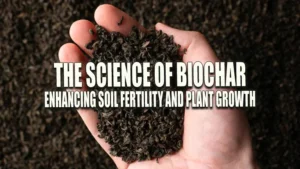

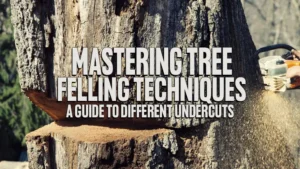
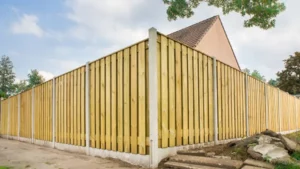

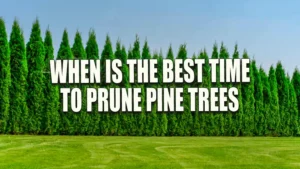
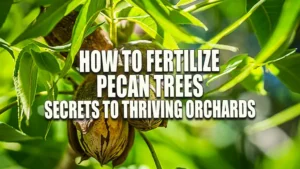


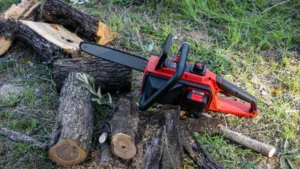
Leave your comment